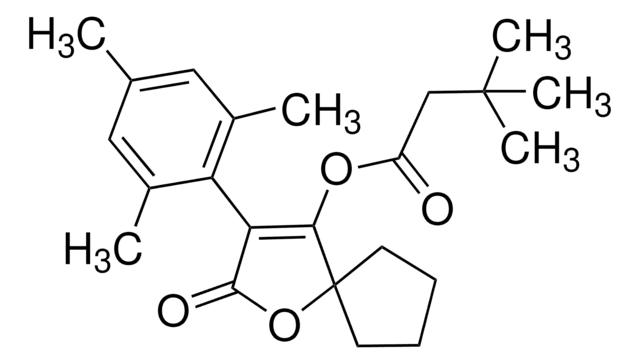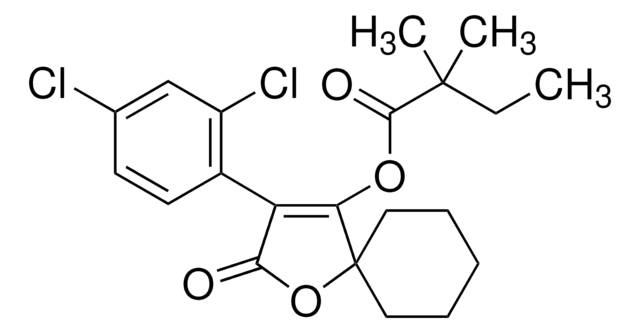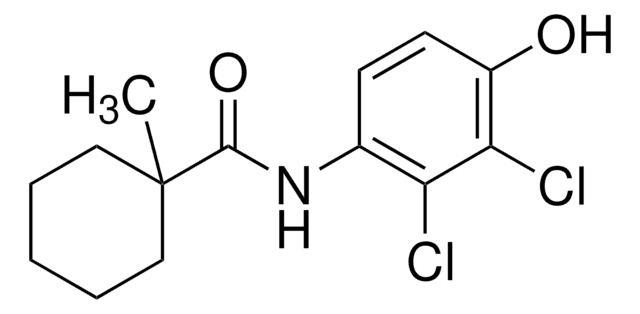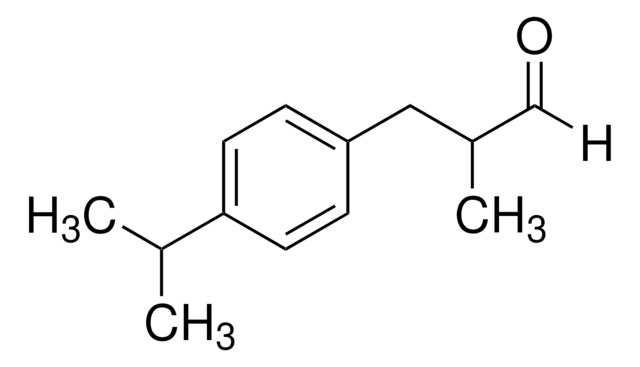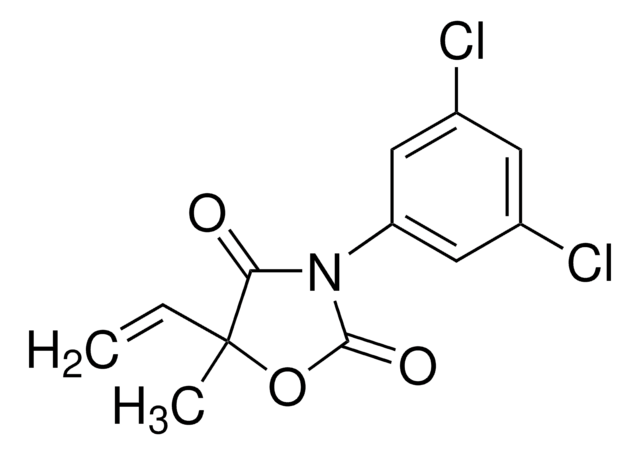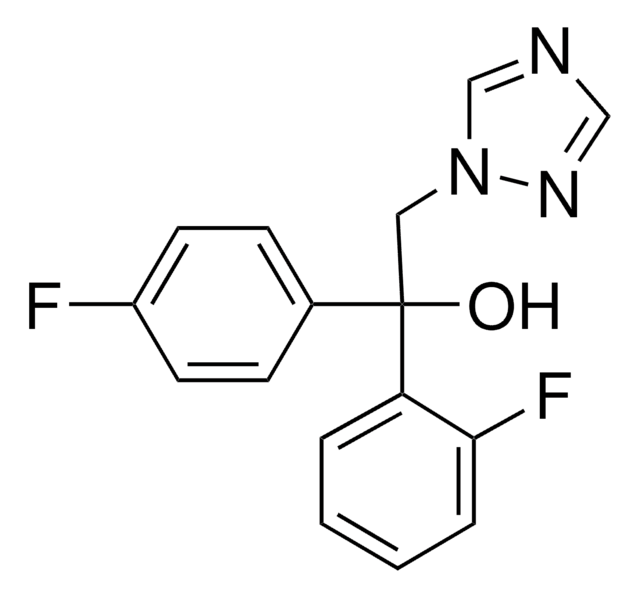Kluczowe dokumenty
CRM03908
Spirodiclofen
certified reference material, TraceCERT®, Manufactured by: Sigma-Aldrich Production GmbH, Switzerland
Synonim(y):
3-(2,4-Dichlorophenyl)-2-oxo-1-oxaspiro[4.5]dec-3-en-4-yl) 2,2-dimethylbutyrate
About This Item
Polecane produkty
klasa czystości
certified reference material
TraceCERT®
Poziom jakości
linia produktu
TraceCERT®
Formularz
powder
okres trwałości
limited shelf life, expiry date on the label
producent / nazwa handlowa
Manufactured by: Sigma-Aldrich Production GmbH, Switzerland
ciąg SMILES
CCC(C)(C)C(=O)OC1=C(C(=O)OC12CCCCC2)c3ccc(Cl)cc3Cl
InChI
1S/C21H24Cl2O4/c1-4-20(2,3)19(25)26-17-16(14-9-8-13(22)12-15(14)23)18(24)27-21(17)10-6-5-7-11-21/h8-9,12H,4-7,10-11H2,1-3H3
Klucz InChI
DTDSAWVUFPGDMX-UHFFFAOYSA-N
Szukasz podobnych produktów? Odwiedź Przewodnik dotyczący porównywania produktów
Opis ogólny
Spirodiclofen is a selective, non-systemic acaricide belonging to the new family of spirocyclic tetronic acids (keto-enols). It is highly active against spider mites, such as Panonychus, Tetranychus, Phyllocoptruta, Brevipalpus, and Aculus species in citrus, pome fruits, grapes, and nuts. Spirodiclofen targets lipid biosynthesis by inhibiting acetyl-coenzyme A carboxylase (ACCase) and it effectively controls the population of mites resistant to other acaricides.
Spirodiclofen has to be monitored in the Multiannual Control Programmes for Pesticides Residues (MACP), run within the EU and EFTA in/on products of plant origin. Maximum residue levels (MRLs) have been set according to Reg (EG) No 2016/1902 for spirodiclofen for various products of plant and animal origin from 0.004 to 2 mg/kg.
Spirodiclofen was initially included in Annex I to Directive 91/414/EEC on 1 August 2010 and is approved under Regulation (EC) No 1107/2009, following Commission Implementing Regulation (EU) No 540/2011. However, after its approval expired on 31 July 2020, Spirodiclofen is no longer approved in the European Union (EU) but is authorized in third countries for use on citrus fruits that might be fed to livestock.
Zastosowanie
- Study the molecular mechanisms of spirodiclofen resistance using two highly resistant Tetranychus urticae strains with different genetic backgrounds
- To evaluate the sublethal effects of spirodiclofen, abamectin, and pyridaben on life-history traits and life-table parameters of two-spotted spider mites, Tetranychus urticae
- To evaluate the effect of a combination of spirodiclofen with other insecticides for the control of Brevipalpus yothersi in citrus
- Investigate the effects of salicylic acid treatment of tomato plants on the susceptibility of Tetranychus urticae to spirodiclofen, the activities of mite digestive enzymes, and its energy reserves
- Simultaneous determination of spirodiclofen, spiromesifen, and spirotetramat and their metabolites in edible fungi using a modified QuEChERS procedure and UHPLC-MS/MS
Polecane produkty
Informacje prawne
Nie możesz znaleźć właściwego produktu?
Wypróbuj nasz Narzędzie selektora produktów.
Hasło ostrzegawcze
Danger
Zwroty wskazujące rodzaj zagrożenia
Zwroty wskazujące środki ostrożności
Klasyfikacja zagrożeń
Aquatic Chronic 1 - Carc. 1B - Repr. 2 - Skin Sens. 1B - STOT RE 2
Kod klasy składowania
6.1C - Combustible acute toxic Cat.3 / toxic compounds or compounds which causing chronic effects
Klasa zagrożenia wodnego (WGK)
WGK 2
Temperatura zapłonu (°F)
Not applicable
Temperatura zapłonu (°C)
Not applicable
Wybierz jedną z najnowszych wersji:
Certyfikaty analizy (CoA)
Nie widzisz odpowiedniej wersji?
Jeśli potrzebujesz konkretnej wersji, możesz wyszukać konkretny certyfikat według numeru partii lub serii.
Masz już ten produkt?
Dokumenty związane z niedawno zakupionymi produktami zostały zamieszczone w Bibliotece dokumentów.
Nasz zespół naukowców ma doświadczenie we wszystkich obszarach badań, w tym w naukach przyrodniczych, materiałoznawstwie, syntezie chemicznej, chromatografii, analityce i wielu innych dziedzinach.
Skontaktuj się z zespołem ds. pomocy technicznej